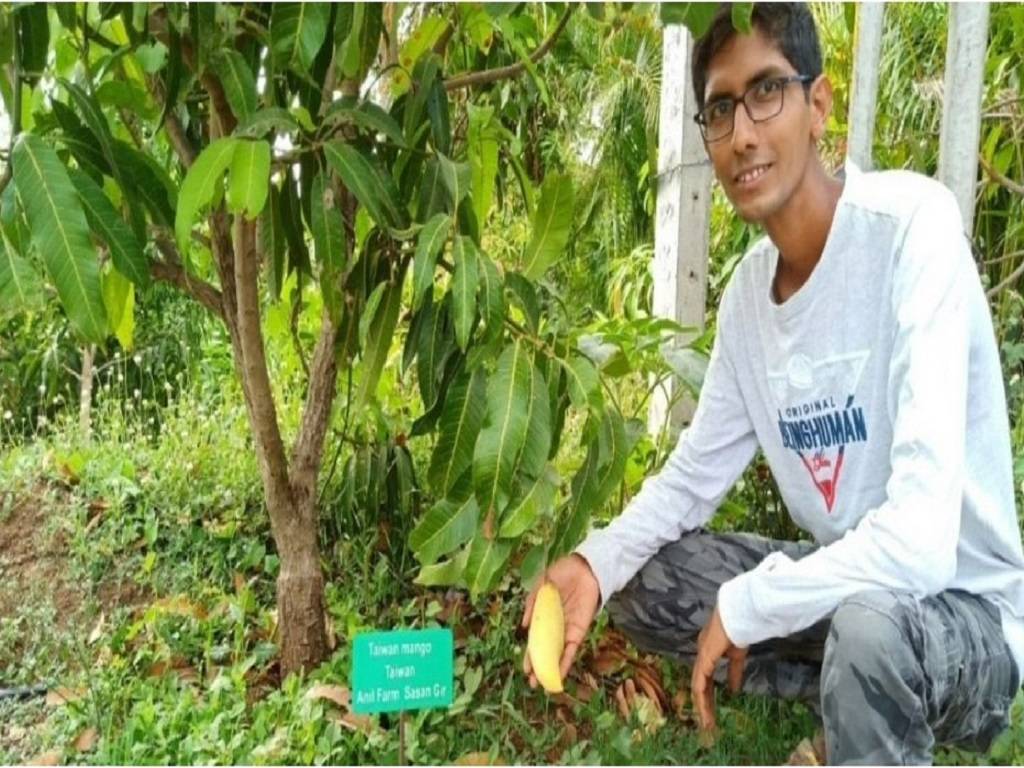
A unique mango garden located within 3 km of the Gir forest national park in Bhalchhel village, Gujarat, provides a visual delight. Thousands of mango trees cover 12.5 acres, generating more than 200 cultivars of fruit from all across the country. The massive collection of mangoes that the Jhariya family has acquired and stored over the past 30 years will leave you awestruck.
According to Sumeet, one of the members of the Jhariya family, the Kesar variety of mangoes is popular in his region, just like the Alphonso variety from Konkan and the Dasheri variety from Uttar Pradesh. In 1985, his grandpa Noor Ali Veera Jhariya moved from Sangodra village to Bhalchhel and bought ten acres of land to start a mango plantation.
Noor was a conventional farmer with a farm of roughly six acres. He sold the old farm in order to purchase more acreage. He could get a better deal because the new property was not ideal for farming and required a lot of land improvement and soil preparation.
His efforts were rewarded when the mango plantation produced the expected income. By 1990, he had further expanded his farm operations by establishing a nursery to sell seedlings to farmers as a source of additional revenue. Every year, Noor sells around 10,000 seedlings.
He was enthralled by mangoes, and his enthusiasm grew as he learned about other varieties grown around India. Around 1996, he began collecting several mango varietals. He started by obtaining 14 mango kinds and growing them.
Jhariya Family’s Orchard of 230 Mangoes
Today, the Jhariya family grows 230 varieties of mangoes in their orchard, including South Indian Chinna Rasam and Chandrama, as well as North Indian Chaunsa, Langda, and Daseri. They also have small mangoes and Sindhu-117, a seedless type. Other types are native to the United States, Thailand, Australia, Europe, and Israel. Fruit varieties such as Katimon, Bajrang Baramasi, Baramasi Valsad, and others are grown on the farm and produce mangoes every three months.
Tourists frequently believe that we created these types. However, we obtain these from folks who were already cultivating them," Sumeet clarifies.
Jhariya Family's Income
Anil Mango Farms and Nursery, owned by the family, sells roughly 2 lakh mango saplings each year, which helps them generate an income of Rs.24 lakhs annually. Anil is Sumeet's older brother, and they run the company together as a family.
















